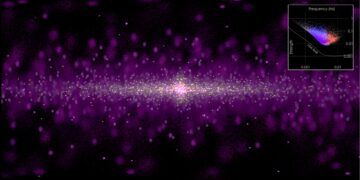Astronomy is experiencing a dual revolution, blending practical innovation and imaginative exploration. On one hand, the Black Hole Coded Aperture Telescope (BlackCAT) is poised to revolutionize X-ray astronomy with its compact and cost-effective design. On the other, the theoretical concept of Dyson spheres around black holes offers a bold new approach to detecting advanced extraterrestrial civilizations.
BlackCAT: A Game-Changer in X-Ray Astronomy
X-ray astronomy has long relied on tools like Swift and Fermi telescopes, which are now approaching the end of their operational lifespans. These aging giants struggle to meet the growing demand for linking gravitational wave detections with their electromagnetic counterparts. With new gravitational wave detectors expected to produce weekly events, the need for advanced equipment is more pressing than ever.
BlackCAT is a compact CubeSat designed specifically to detect soft X-rays from phenomena like gamma-ray bursts (GRBs) and black hole mergers. Equipped with CMOS X-ray cameras and a coded aperture mask, this 6U CubeSat boasts unprecedented sensitivity and precision. The cameras can produce high-resolution images, while the coded mask allows for a broad field of view—an essential feature for tracking fleeting cosmic events.
The ability to detect both gravitational and electromagnetic signals is crucial for understanding cosmic events. BlackCAT bridges this gap by providing timely, precise X-ray data that complements gravitational wave observations. This synergy enables astronomers to paint a more comprehensive picture of high-energy phenomena, from violent black hole collisions to the birth of new celestial objects.
Dyson Spheres Around Black Holes: A Bold Vision
The Kardashev Scale categorizes civilizations by their energy consumption, with advanced civilizations theorized to harness energy on a cosmic scale. Dyson spheres, megastructures designed to capture a star’s energy, are central to this vision. Extending this concept, researchers now propose Dyson spheres around black holes as a more efficient energy source for advanced extraterrestrial civilizations.
A Dyson sphere around a black hole would leverage the immense energy produced by the accretion of matter. This setup could theoretically generate vast amounts of usable energy, sufficient to sustain even the most advanced civilizations. Researchers suggest that such structures might emit distinct infrared and submillimeter signatures, making them detectable with current technology.
The Atacama Large Millimeter/submillimeter Array (ALMA) is well-suited to search for these unique energy patterns. By analyzing specific wavelengths, astronomers can identify potential signs of Dyson spheres or other energy-harvesting structures. This approach expands the scope of the Search for Extraterrestrial Intelligence (SETI) beyond traditional radio signals, opening new avenues for discovering advanced civilizations.
Common Threads and Broader Implications
BlackCAT and the Dyson sphere hypothesis exemplify the dual nature of modern astronomy. BlackCAT represents the cutting-edge of technological innovation, offering practical solutions to existing challenges. In contrast, the Dyson sphere concept pushes the boundaries of theoretical exploration, inviting us to imagine the possibilities of advanced civilizations.
Both advancements deepen our understanding of the cosmos. BlackCAT enhances our ability to study high-energy events, shedding light on the dynamics of black holes and gamma-ray bursts. Meanwhile, the Dyson sphere hypothesis prompts us to consider how intelligent life might manipulate energy on a grand scale, potentially reshaping our search for extraterrestrial intelligence.
Despite their promise, both initiatives face significant challenges. BlackCAT must prove its efficacy in the harsh conditions of space, while the Dyson sphere hypothesis requires refined detection techniques and further theoretical development. However, these challenges also pave the way for future advancements, inspiring continued innovation in astronomy.
Conclusion
The BlackCAT mission and Dyson sphere hypothesis demonstrate humanity’s relentless drive to explore and understand the universe. Whether through compact CubeSats that revolutionize X-ray astronomy or bold theories that expand our search for alien life, these efforts showcase the ingenuity and curiosity that define modern science.









![Gamma-ray burst [GRB]. Credit: Cruz Dewilde/ NASA SWIFT.](https://nasaspacenews.com/wp-content/uploads/2025/05/gamma-ray-burst-credit-nasa-swift-cruz-dewilde-1-75x75.jpg)









